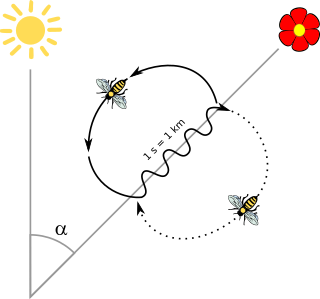Related Research Articles
Genomic imprinting is an epigenetic phenomenon that causes genes to be expressed or not, depending on whether they are inherited from the female or male parent. Genes can also be partially imprinted. Partial imprinting occurs when alleles from both parents are differently expressed rather than complete expression and complete suppression of one parent's allele. Forms of genomic imprinting have been demonstrated in fungi, plants and animals. In 2014, there were about 150 imprinted genes known in mice and about half that in humans. As of 2019, 260 imprinted genes have been reported in mice and 228 in humans.

Carl Richard Woese was an American microbiologist and biophysicist. Woese is famous for defining the Archaea in 1977 through a pioneering phylogenetic taxonomy of 16S ribosomal RNA, a technique that has revolutionized microbiology. He also originated the RNA world hypothesis in 1967, although not by that name. Woese held the Stanley O. Ikenberry Chair and was professor of microbiology at the University of Illinois Urbana–Champaign.

The Africanized bee, also known as the Africanized honey bee (AHB) and colloquially as the "killer bee", is a hybrid of the western honey bee, produced originally by crossbreeding of the East African lowland honey bee (A. m. scutellata) with various European honey bee subspecies such as the Italian honey bee (A. m. ligustica) and the Iberian honey bee (A. m. iberiensis).

Waggle dance is a term used in beekeeping and ethology for a particular figure-eight dance of the honey bee. By performing this dance, successful foragers can share information about the direction and distance to patches of flowers yielding nectar and pollen, to water sources, or to new nest-site locations with other members of the colony.
Vitellogenin is a precursor of egg yolk that transports protein and some lipid from the liver through the blood to the growing oocytes where it becomes part of the yolk. Normally, it is only found in the blood or hemolymph of females, and can therefore be used as a biomarker in vertebrates of exposure to environmental estrogens which stimulate elevated levels in males as well as females. "Vitellogenin" is a synonymous term for the gene and the expressed protein. The protein product is classified as a glycolipoprotein, having properties of a sugar, fat and protein. It belongs to a family of several lipid transport proteins.
The Honey Bee Genome Sequencing Consortium is an international collaborative group of genomics scientists, scientific organisations and universities trying to decipher the genome sequences of the honey bee. It was formed in 2001 by American scientists. In the US, the project is funded by the National Human Genome Research Institute, the United States Department of Agriculture (USDA), the Texas Agricultural Experiment Station, the University of Illinois Sociogenomics Initiative, and various beekeepers association and the bee industry.

The western honey bee or European honey bee is the most common of the 7–12 species of honey bees worldwide. The genus name Apis is Latin for 'bee', and mellifera is the Latin for 'honey-bearing' or 'honey-carrying', referring to the species' production of honey.
The genetics of social behavior is an area of research that attempts to address the question of the role that genes play in modulating the neural circuits in the brain which influence social behavior. Model genetic species, such as D.melanogaster and Apis mellifera, have been rigorously studied and proven to be instrumental in developing the science of genetics. Many examples of genetic factors of social behavior have been derived from a bottom-up method of altering a gene and observing the change it produces in an organism. Sociogenomics is an integrated field that accounts for the complete cellular genetic complement of an organism from a top-down approach, accounting for all biotic influences that effect behavior on a cellular level.

Horizontal gene transfer (HGT) refers to the transfer of genes between distant branches on the tree of life. In evolution, it can scramble the information needed to reconstruct the phylogeny of organisms, how they are related to one another.
Nancy A. Moran is an American evolutionary biologist and entomologist, University of Texas Leslie Surginer Endowed Professor, and co-founder of the Yale Microbial Diversity Institute. Since 2005, she has been a member of the United States National Academy of Sciences. Her seminal research has focused on the pea aphid, Acyrthosiphon pisum and its bacterial symbionts including Buchnera (bacterium). In 2013, she returned to the University of Texas at Austin, where she continues to conduct research on bacterial symbionts in aphids, bees, and other insect species. She has also expanded the scale of her research to bacterial evolution as a whole. She believes that a good understanding of genetic drift and random chance could prevent misunderstandings surrounding evolution. Her current research goal focuses on complexity in life-histories and symbiosis between hosts and microbes, including the microbiota of insects.

Eusociality evolved repeatedly in different orders of animals, notably termites and the Hymenoptera. This 'true sociality' in animals, in which sterile individuals work to further the reproductive success of others, is found in termites, ambrosia beetles, gall-dwelling aphids, thrips, marine sponge-dwelling shrimp, naked mole-rats, and many genera in the insect order Hymenoptera. The fact that eusociality has evolved so often in the Hymenoptera, but remains rare throughout the rest of the animal kingdom, has made its evolution a topic of debate among evolutionary biologists. Eusocial organisms at first appear to behave in stark contrast with simple interpretations of Darwinian evolution: passing on one's genes to the next generation, or fitness, is a central idea in evolutionary biology.
Cognitive genomics is the sub-field of genomics pertaining to cognitive function in which the genes and non-coding sequences of an organism's genome related to the health and activity of the brain are studied. By applying comparative genomics, the genomes of multiple species are compared in order to identify genetic and phenotypical differences between species. Observed phenotypical characteristics related to the neurological function include behavior, personality, neuroanatomy, and neuropathology. The theory behind cognitive genomics is based on elements of genetics, evolutionary biology, molecular biology, cognitive psychology, behavioral psychology, and neurophysiology.

Robert E. Page Jr. is one of the foremost honey bee geneticists in the world and a Foundation Chair of Life Sciences of Arizona State University. An author of more than 250 research papers and articles, his work on the self-organizing regulatory networks of honey bees has been outlined in his book, "The Spirit of the Hive: The Mechanisms of Social Evolution," published by Harvard University Press in 2013. Page currently holds the titles of Arizona State University Provost Emeritus and Regents Professor Emeritus. He is also chair and professor emeritus at the University of California-Davis and an external professor at the Santa Fe Institute.

The Carl R. Woese Institute for Genomic Biology (IGB) is an interdisciplinary facility for genomics research at the University of Illinois Urbana-Champaign. The Institute was built in 2006 to centralize biotechnology research at the University of Illinois. Current research at the IGB explores the genomic bases of a wide range of phenomena, including the progression of cancer, the ecological impact of global change, tissue and organ growth, and the diversity of animal behavior.
Epigenetics in insects is the role that epigenetics plays in insects.
Harris A. Lewin, an American biologist, is a professor of evolution and ecology and Robert and Rosabel Osborne Endowed Chair at the University of California, Davis. He is a member of the National Academy of Sciences. In 2011, Lewin won the Wolf Prize in Agriculture for his research into cattle genomics. Lewin chairs the working group for the Earth BioGenome Project, a moonshot for biology that aims to sequence, catalog, and characterize the genomes of all of Earth’s eukaryotic biodiversity over a period of 10 years. Lewin is a founding co-editor of the Annual Review of Animal Biosciences, first published in 2013.
Jonathan V Sweedler is an American chemist specializing in bioanalytical chemistry, neurochemistry and cell to cell biology and behavior. He is the James R. Eiszner Family Endowed Chair in Chemistry at the University of Illinois at Urbana-Champaign. Additionally, he holds a faculty appointment in the Beckman Institute. He is also an Elected Fellow to the American Chemical Society, for which he is also the society's Editor in Chief for the journal Analytical Chemistry.

Elizabeth Anna Ainsworth is an American plant physiologist currently employed by the University of Illinois at Urbana-Champaign. She previously worked for the United States Department of Agriculture (USDA) Agricultural Research Service (ARS). She is a Fellow of the American Association for the Advancement of Science (AAAS) and was awarded the 2018 Crop Science Society of America Presidential Award. She is known for researching the effects of atmospheric pollutants, including ozone and carbon dioxide, on the productivity of selected major crops such as corn and soybeans.

Donald Richard Ort is an American botanist and biochemist. He is the Robert Emerson Professor of Plant Biology and Crop Sciences at the University of Illinois at Urbana-Champaign where he works on improving crop productivity and resilience to climate change by redesigning photosynthesis. He is a member of the National Academy of Sciences (NAS) and a fellow of the American Association for the Advancement of Science (AAAS) and American Society of Plant Biologists (ASPB).
The African BioGenome Project, or AfricaBP, is an international effort to sequence the genomes of all animals, all plants, all fungi, and all protists that are native to Africa at an estimated cost of $1 billion U.S. dollars. The project prioritizes doing its sequencing work and data storage within the African continent.
References
- ↑ "Gene E. Robinson Curriculum Vitae. Retrieved March 13, 2015". Archived from the original on August 2, 2015. Retrieved March 13, 2015.
- ↑ Robinson, G. E. (1992). "Regulation of Division of Labor in Insect Societies". Annual Review of Entomology. 37: 637–665. doi:10.1146/annurev.en.37.010192.003225. PMID 1539941.
- ↑ Zagorski, N. (2006). "Profile of Gene E. Robinson". Proceedings of the National Academy of Sciences. 103 (44): 16065–16067. Bibcode:2006PNAS..10316065Z. doi: 10.1073/pnas.0608392103 . PMC 1637537 . PMID 17065325.
- ↑ Ben-Shahar, Y.; Robichon, A.; Sokolowski, M. B.; Robinson, G. E. (2002). "Influence of Gene Action Across Different Time Scales on Behavior". Science. 296 (5568): 741–744. Bibcode:2002Sci...296..741B. doi:10.1126/science.1069911. PMID 11976457. S2CID 42350832. (reported in NY Times, Washington Post, German Public Radio, South African Public Radio, Genome News Network; included in Perspectives of Animal Behavior 3rd ed., Goodenough et al.; Animal Behavior, Alcock)
- ↑ Whitfield, C. W.; Cziko, A. M.; Robinson, G. E. (2003). "Gene Expression Profiles in the Brain Predict Behavior in Individual Honey Bees". Science. 302 (5643): 296–299. Bibcode:2003Sci...302..296W. doi:10.1126/science.1086807. PMID 14551438. S2CID 30489284. (reported in Reuters, CNN.com, St. Louis Dispatch, Wall Street Journal, Belgium De Standaard; included in Perspectives of Animal Behavior 3rd ed., Goodenough et al.; Animal Behavior, Alcock)
- ↑ Robinson, G. E. (2004). "GENOMICS: Beyond Nature and Nurture". Science. 304 (5669): 397–399. doi:10.1126/science.1095766. PMID 15087536. S2CID 25111728.
- ↑ Robinson, G.E. 2004. The behavior of genes. New York Times op-ed, 13 December
- ↑ Honeybee Genome Sequencing Consortium (2006). "Insights into social insects from the genome of the honeybee Apis mellifera". Nature. 443 (7114): 931–949. Bibcode:2006Natur.443..931T. doi:10.1038/nature05260. PMC 2048586 . PMID 17073008.
- ↑ "2009 Pioneer Award Recipients". NIH Director's Pioneer Award Program. National Institutes of Health. Archived from the original on July 29, 2020. Retrieved September 17, 2011.
- ↑ "Book of Members, 1780-2010: Chapter R" (PDF). American Academy of Arts and Sciences . Retrieved September 17, 2011.
- ↑ "NAS Membership Directory". U.S. National Academy of Sciences . Retrieved September 17, 2011. Search with Robinson as last name.
- ↑ "Director Receives Degree in Honor of Hebrew University 90th Celebration". Carl R. Woese Institute for Genomic Biology. Archived from the original on June 15, 2017. Retrieved January 31, 2015.
- ↑ "The 2018 Wolf Prize laureates have been announced". www.wolffund.org.il (in Hebrew). Retrieved 2018-04-26.
- ↑ "IGB Director Awarded 2018 Wolf Prize in Agriculture | Carl R. Woese Institute for Genomic Biology". www.igb.illinois.edu. Retrieved 2018-04-26.